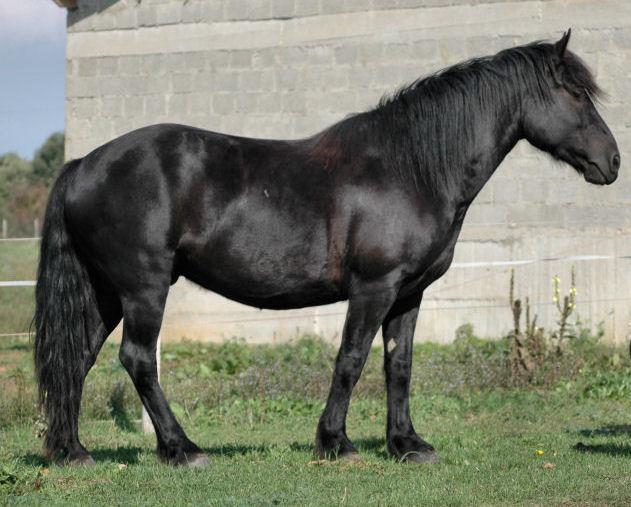
Continent: Europe
Country: France
Weight: 400 – 500 kg
Height: 145 – 155 cm

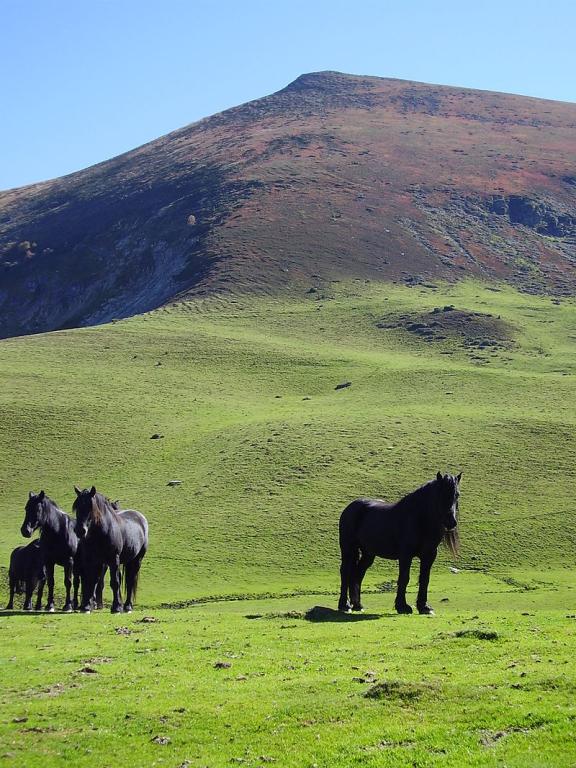

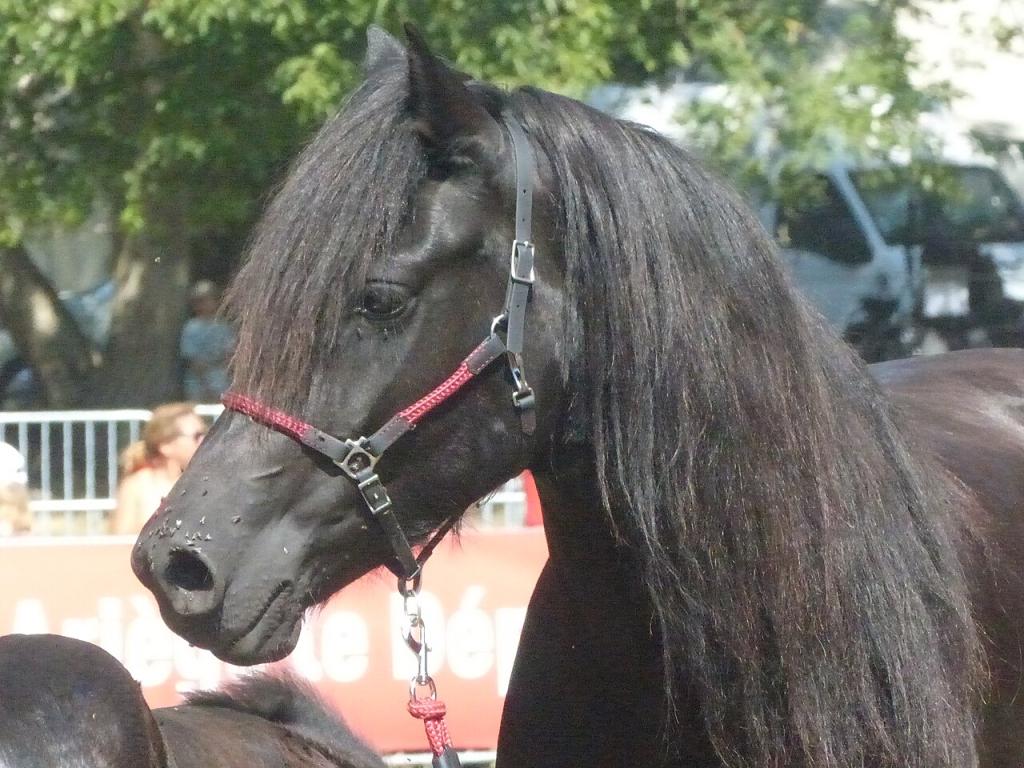
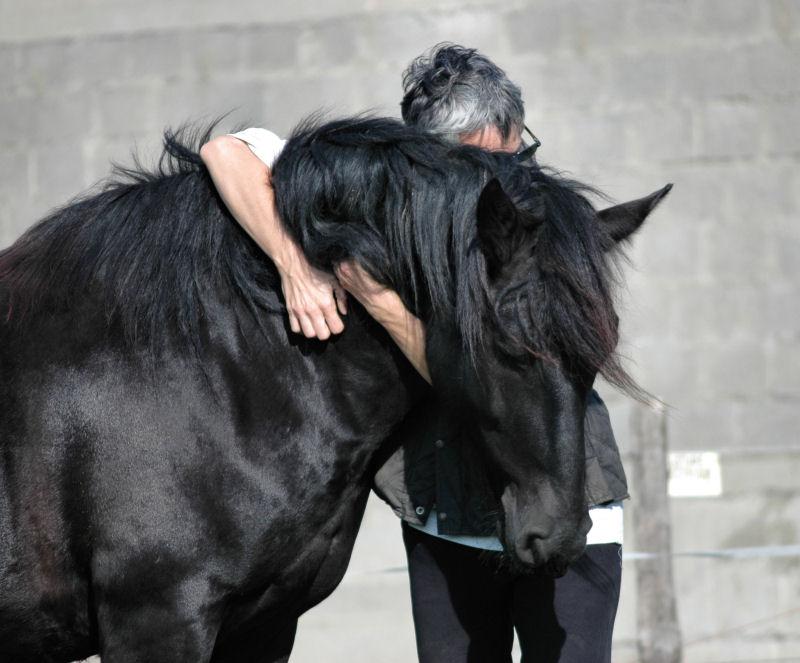
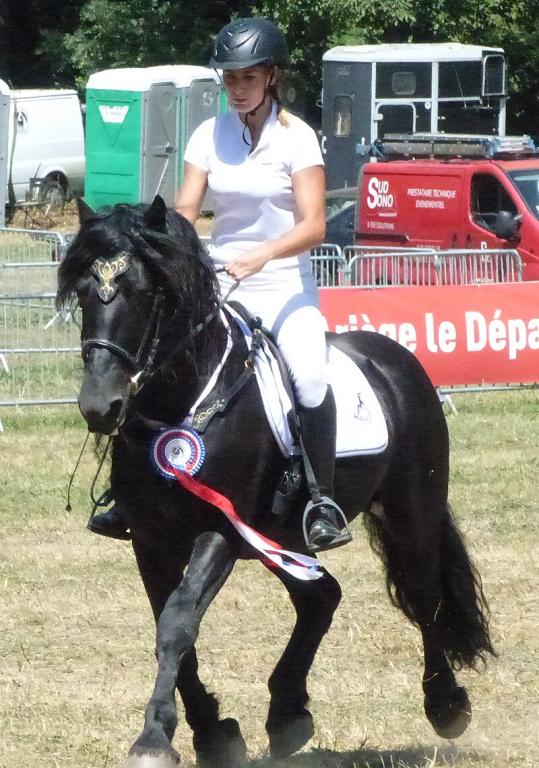
The Mérens horse, also known as the "Ariège mountain horse", originates from the Pyrenean valleys of the Ariège département, particularly around the village of Mérens-les-Vals, located near Ax-les-Thermes, in the historical regions of Pays de Foix and Pays d’Olmes.
Precise geographic origin:
Region: Ariège, Occitanie, southwestern France
Core zone: Upper Ariège, Ariège valley, Plateau de Beille, transhumance passes toward Andorra and the Couserans
Climate: Mountain climate, harsh, with long snowy winters and short summers
Environment: Steep terrain, summer pastures (estives), forests, and high-altitude meadows
The Mérens horse is an emblematic companion of the pastoral populations of the Ariège. Traditionally, it was used for farm work, pack transport, travel across valleys, and seasonal transhumance.
It is closely tied to mountain rural life, serving as a partner to shepherds, muleteers, and farmers.
The breed features prominently in local festivals, ceremonial transhumance events, autumn fairs, and Pyrenean legends.
The Mérens horse has historically been bred in the Ariège Pyrenees, its place of origin. It is strongly associated with the upper Ariège valley, near the communes of Mérens-les-Vals, Ax-les-Thermes, and the Plateau de Beille. These rugged and wooded mountain zones have shaped the breed’s renowned hardiness.
Today, breeding has spread to other French regions, including:
– Occitanie (Ariège, Haute-Garonne, Aude, Pyrénées-Orientales)
– Nouvelle-Aquitaine (Haute-Vienne, Corrèze)
– Auvergne-Rhône-Alpes (Cantal, Lozère)
Mérens horses are also bred in other European countries, such as:
– Germany, Switzerland, Italy, and Belgium, mainly for trekking or conservation purposes.
Summer transhumance is still a living tradition in the Pyrenees, with Mérens horses grazing freely in the high pastures, contributing to the breed’s natural selection.
The Mérens horse holds significant genetic value as a rustic native breed of the Pyrenees. Its genetic heritage is considered precious for several reasons:
– Exceptional hardiness: It is highly adapted to harsh climates, rugged terrains, and outdoor living. This makes it an excellent genetic reservoir for improving endurance and resilience in other lines.
– Fertility and longevity: Known for its natural fertility, early maturity, and long lifespan, traits it readily passes on to its offspring.
– Conservation breed: Once threatened with extinction, the Mérens is now recognized as a protected heritage breed in France, supported by conservation programs (SHERPA, IFCE).
– Ancient mountain genotype: The breed shares characteristics with prehistoric horses, making it a primitive type with a unique genetic profile, sometimes used in genetic studies or conservation crossbreeding.
– Improvement of endurance and temperament: The Mérens is used in crossbreeding to transmit its calm temperament, docility, and stamina, especially for leisure riding, equestrian tourism, or therapeutic programs.
Ancient origins and Pyrenean legend :
The Mérens horse is named after the village of Mérens-les-Vals, located in the high valleys of the Ariège Pyrenees in France. It belongs to the group of small mountain horses, closely related to very ancient types. Some researchers link it to prehistoric horses, like those depicted in the caves of Niaux and Lascaux, due to its black coat and primitive build.
Its morphology also suggests Iberian or even Roman influence, as it resembles certain Mediterranean horses. This black, robust, and hardy horse has supported local populations for centuries in agricultural work and transhumance.
War and work companion :
During the Middle Ages, the Mérens was used as a pack, war, and light draft horse. It carried goods across Pyrenean mountain passes, pulled plows, and accompanied shepherds to alpine pastures. Its endurance, thriftiness, and docility made it a trusted partner for mountain life.
It also served in Napoleonic armies, where its ability to navigate rough terrain was appreciated.
Decline and near extinction in the 20th century :
With the mechanization of agriculture and the gradual abandonment of mountain traditions, the Mérens saw a dramatic decline in the 20th century. By the 1970s, the breed was close to extinction, with only a few remaining individuals, many of which were crossbred.
Conservation and revival :
In the 1980s, a small group of passionate breeders often neo-rurals revived the breed with a double objective: to preserve its Pyrenean heritage and promote a horse suited to new uses (leisure, trekking, green tourism).
The Mérens studbook, created in 1948, was reorganized. Strict breed standards were established to ensure purity and typicity. The creation of SHERPA (Breeders' Syndicate for the Pyrenean Ariège Horse) enabled rigorous breeding oversight.
National and international recognition :
Today, the Mérens is officially recognized as a French breed and considered part of the living heritage of the Pyrenees. It appears at major events such as the Paris Agricultural Show, as well as in shows and driving demonstrations.
Breeding has expanded beyond Ariège, both in France and across Europe particularly in Belgium, Germany, and Italy where the Mérens is valued for its reliability, versatility, and rustic beauty.
The Mérens is renowned for its balanced temperament and high intelligence. Very calm, docile, and cooperative, it bonds easily with humans, making it an ideal partner for both beginners and experienced riders.
It is particularly known for:
– Its gentle nature, often described as reassuring or even therapeutic
– A willingness to please, which facilitates training and learning
– Natural curiosity without excessive nervousness
– A frank and honest character, although some individuals raised in freedom may show a degree of independence
This personality makes the Mérens a versatile horse, suitable for many disciplines: trekking, equine therapy, driving, TREC, or leisure riding. It thrives in herd life, freedom, and in stable relationships with both horses and humans.
"When treated and trained with respect, the Mérens gives the best of itself with loyalty and serenity."
The Mérens horse is currently experiencing a renewed interest, due to both its physical qualities and its reliable, versatile temperament. After nearing extinction in the 1970s, the breed was preserved through structured conservation efforts, and it has since gained wider recognition.
Current trends include:
– A stabilization of population, with birth rates remaining steady each year, primarily in Ariège.
– A growing demand for leisure riding, equestrian tourism, and animal-assisted therapy, where the Mérens excels thanks to its calm and rustic nature.
– The rise of ethical, extensive breeding operations, aligned with values of sustainability and animal welfare.
– A stronger international presence, particularly in Germany, Switzerland, Italy, and Belgium, where enthusiasts help spread the breed beyond its homeland.
However, the breed remains vulnerable: its low genetic diversity and limited number of breeding individuals call for careful management of pairings. Maintaining a rustic type true to its origins is also a challenge against modern selection trends.
In summary, the future of the Mérens breed looks promising, provided that a balance is maintained between heritage preservation and adaptation to modern uses.
The Mérens is known for its robust constitution and exceptional hardiness. Historically raised in the mountains, often in semi-wild conditions, the breed has developed a natural resistance to cold, harsh weather, and dietary variations.
It generally displays:
– Excellent overall health
– Remarkable longevity
– Hard, unshod hooves, well adapted to rough terrain
– High natural fertility, with few reproductive complications
Watch points and genetic considerations :
– No specific genetic disease has been identified to date in the breed.
– Like all breeds with a narrow genetic base, attention must be paid to genetic diversity to avoid inbreeding.
– Some individuals raised in semi-freedom may be less responsive to handling or veterinary care if not accustomed early on.
In general, the Mérens is rarely prone to disease, but it requires a lifestyle in line with its rustic nature: ample space, regular activity, simple diet, and quality forage.
Natural four-beat gait, slow and steady. The Mérens displays a wide, sure, and comfortable walk, well suited for long treks over rough terrain.
Two-beat diagonal gait with suspension. The Mérens offers an elastic, dynamic, and well-cadenced trot, often appreciated in driving and TREC.
Three-beat leaping gait. The Mérens shows an energetic yet balanced canter, suitable for varied terrain despite its compact build.


As every year at this time of year, the Mérens horses have completed their transhumance to spend the summer in the mountain pastures. A tradition and a wonderful experience for the breeders and the volunteers who accompany them.